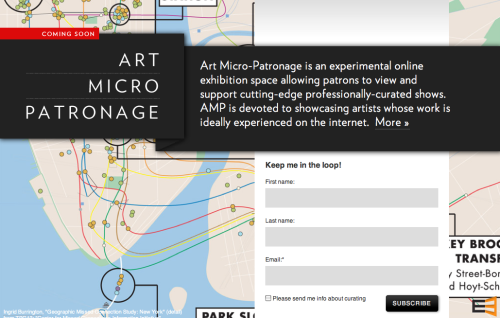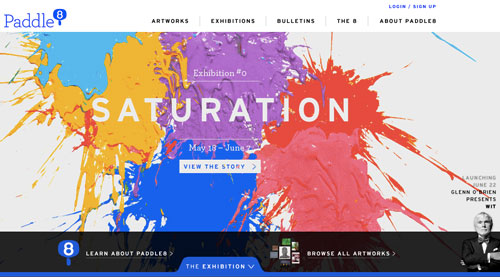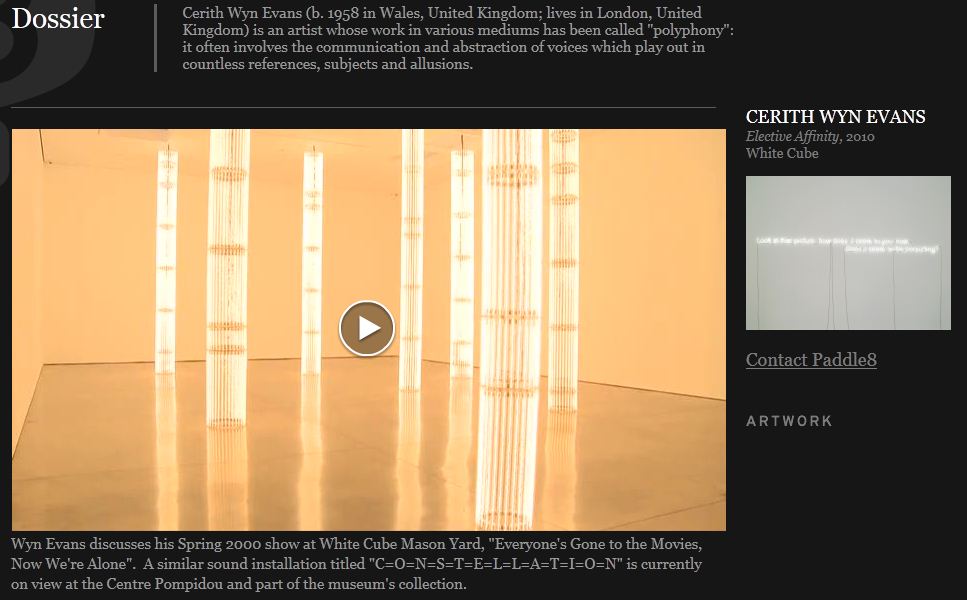Over the last week, society has faced unprecedented territory with the increasing spread of Covid-19. As communities quarantine themselves and take precautions against greater spread, arts and cultural organizations are joining in the effort by closing their doors. Amidst all of this, arts managers are coming up with creative solutions to offer their content and services to the public Now, more than ever, the arts must rely on technology to deliver their content. Below is a sampling qua starter list of virtual responses to Covid19 to date (March 17, 2020).
The Website Exhibition: Old and New


Paddle8: The Next Generation of Art World Experiences
An exhibition opening at a gallery or a museum is a colorful scene; an installation at odds with gravity, a massive video projection, a performance art piece, some marvelous, some questionable paintings, the bubbling and clinking of glasses, erudition with a tiny bit of pretension. And this very scene is re-enacted almost every week in cities around the world, causing one to wonder if the term ‘well-informed of the contemporary art world’ is becoming ever elusive, for a new exhibition signals yet is a new direction in the fast paced art world of today.

Besides the swooping pace, geography and money are limitations for those who would like to keep abreast with the continual and amazingly relentless evolution of the art world. Perhaps you are one of the privileged few who can jet-set across the globe, going from the Frieze Art Fair in London, to the Biennial in Istanbul, followed by a stop at the Venice Biennale, and a final sojourn at the FIAC Art Fair in Paris (this isn’t a fanciful itinerary, I am merely recounting the travels of Lynn Zelevansky, the Director of the Carnegie Museum of Art).
But considering that a mere 1% hold most of the wealth, chances are, you’re probably missing out on a lot of new and upcoming artists that fall under the categories of the provocative, the obscure, the fascinating, and the truly remarkable. Yes, you can always read hundreds of exhibitions reviews but art, at its core, is experiential and reviews convey the feelings of the writer; you’re own thoughts and feelings bow down to the constraints of geography, money, time, and a tendency to declare that writer knoweth best.
Yet what if there existed certain exhibitions that featured the work of contemporary artists, and were curated by leading figures in the art world, solely for the purpose of online viewing? And, almost simultaneously, I retract the what if because Paddle8, a new online art market venture, is exactly that which I described above :
“Paddle8 is a new destination for examining, understanding, and acquiring unique artworks. Paddle8 is directed towards a generation of collectors, artists, and gallerists who see the web as a viable space for learning and access.”
Since its official launch in June, Paddle8 has hosted an online exhibition every month that features artworks selected by a guest curator. The curator also selects eight “quirky art world influencers” who provide “multifaceted insights on works in each exhibition.”
Every artwork in an exhibition is accompanied by a dossier that offers the viewer a deeper understanding of the artist’s inspirations and motivations. These include video interviews, written explanations of a particular piece, other artists that have inspired the artist at hand, and write-ups on related works that have been exhibited elsewhere. As such, the dossier is both textually and visually rich, with some interactive multimedia experiences that are well suited to an online exhibition format.
With the aid of the dossier, an entire context is created around a particular artist or artwork, which is often difficult to accomplish in a physical gallery setting. In fact, it is the dossiers, the curators, and the 8 “quirky influencers”, that make Paddle8 a viable alternative to a physical gallery space. Since its launch, Paddle8 has already had four amazing exhibitions, the most recent of which is titled Immaterial, and is curated by the performance artist, Marina Abramović.
So, if you happen to be a collector, Paddle8 is definitely worth a visit or, more aptly, multiple clicks, some of which may set you back by a few thousand dollars or more. If you happen to be a make-belief collector like me, you can still register to gain access to their virtual exhibitions, and one evening, you may find yourself raising a silent toast to the next generation of art world experiences.







